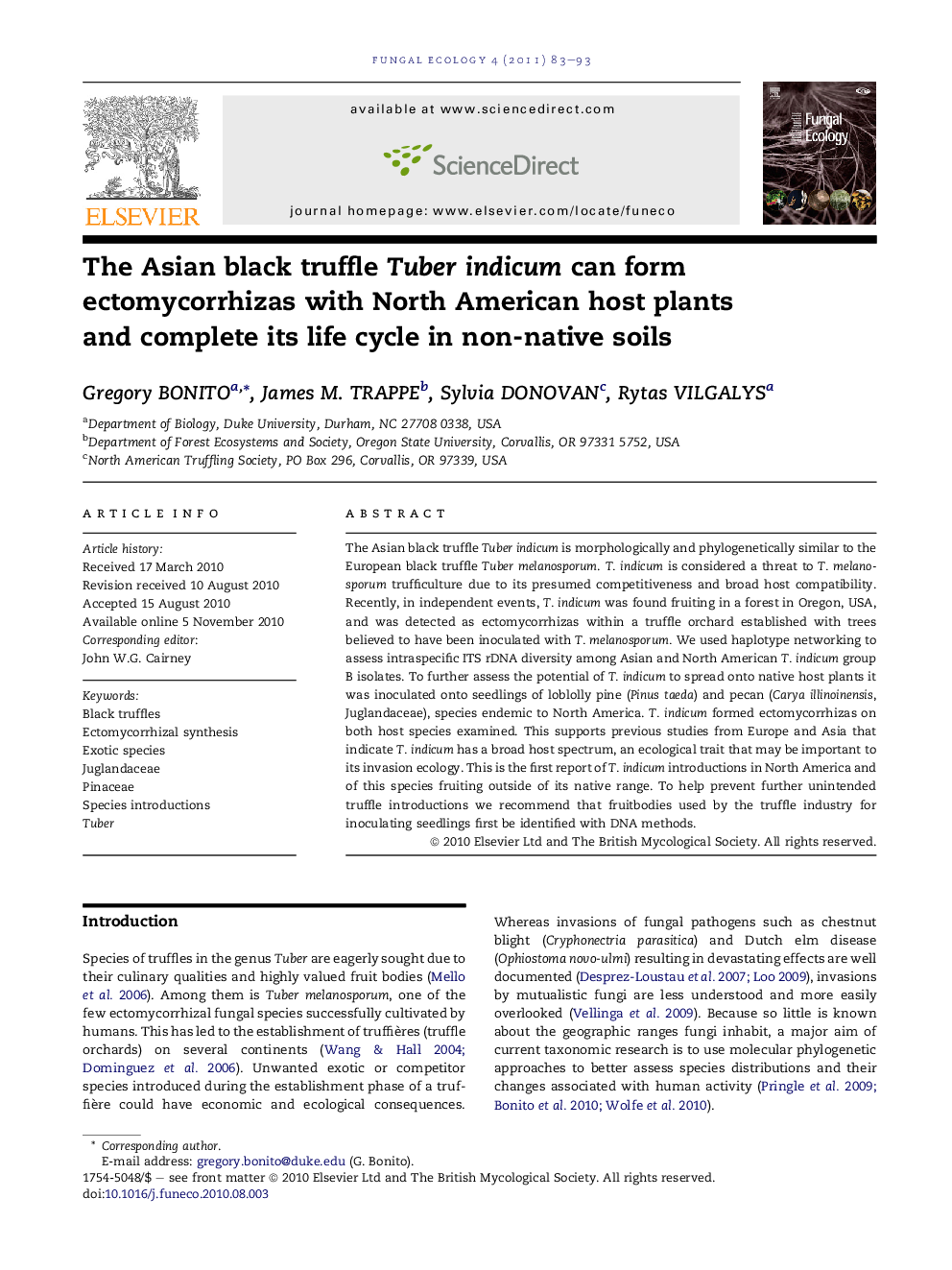| Article ID | Journal | Published Year | Pages | File Type |
|---|---|---|---|---|
| 2053686 | Fungal Ecology | 2011 | 11 Pages |
The Asian black truffle Tuber indicum is morphologically and phylogenetically similar to the European black truffle Tuber melanosporum. T. indicum is considered a threat to T. melanosporum trufficulture due to its presumed competitiveness and broad host compatibility. Recently, in independent events, T. indicum was found fruiting in a forest in Oregon, USA, and was detected as ectomycorrhizas within a truffle orchard established with trees believed to have been inoculated with T. melanosporum. We used haplotype networking to assess intraspecific ITS rDNA diversity among Asian and North American T. indicum group B isolates. To further assess the potential of T. indicum to spread onto native host plants it was inoculated onto seedlings of loblolly pine (Pinus taeda) and pecan (Carya illinoinensis, Juglandaceae), species endemic to North America. T. indicum formed ectomycorrhizas on both host species examined. This supports previous studies from Europe and Asia that indicate T. indicum has a broad host spectrum, an ecological trait that may be important to its invasion ecology. This is the first report of T. indicum introductions in North America and of this species fruiting outside of its native range. To help prevent further unintended truffle introductions we recommend that fruitbodies used by the truffle industry for inoculating seedlings first be identified with DNA methods.
